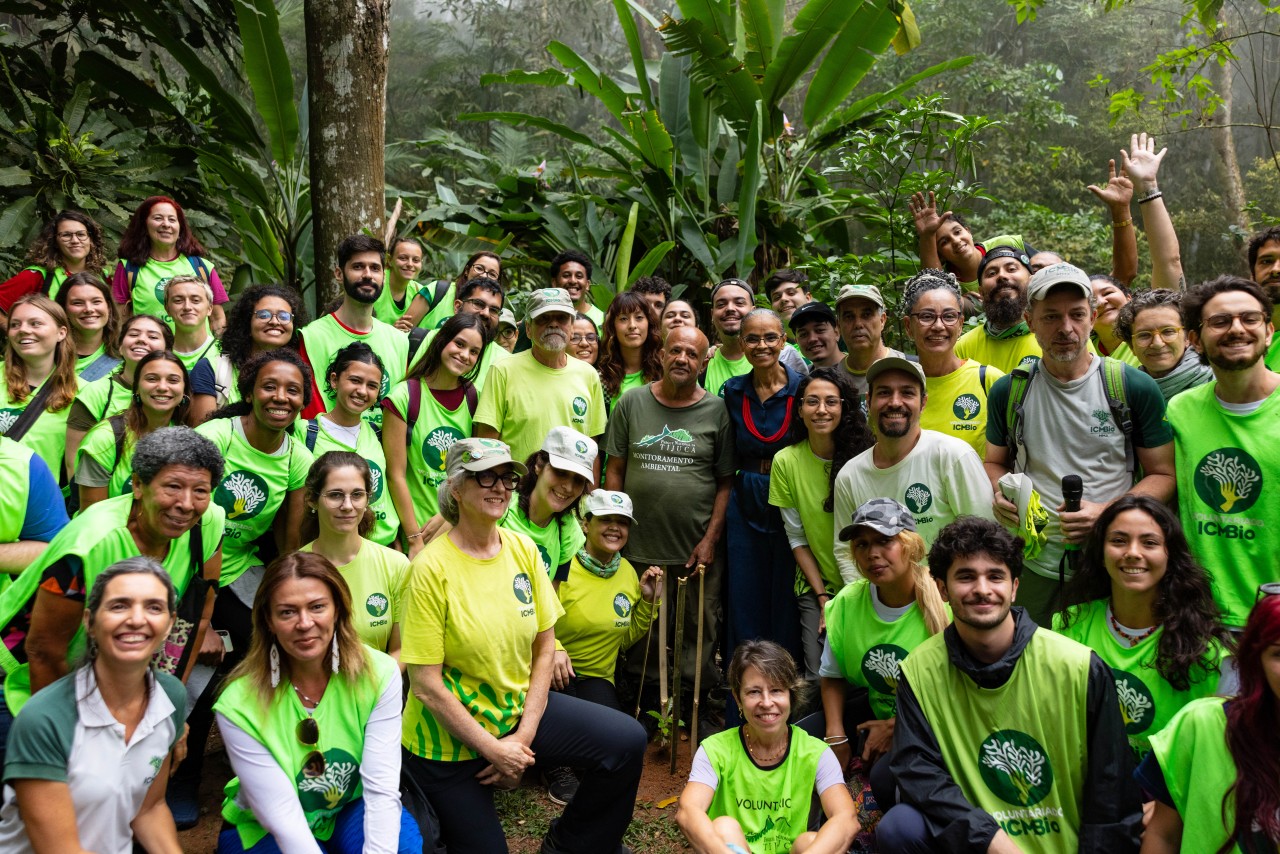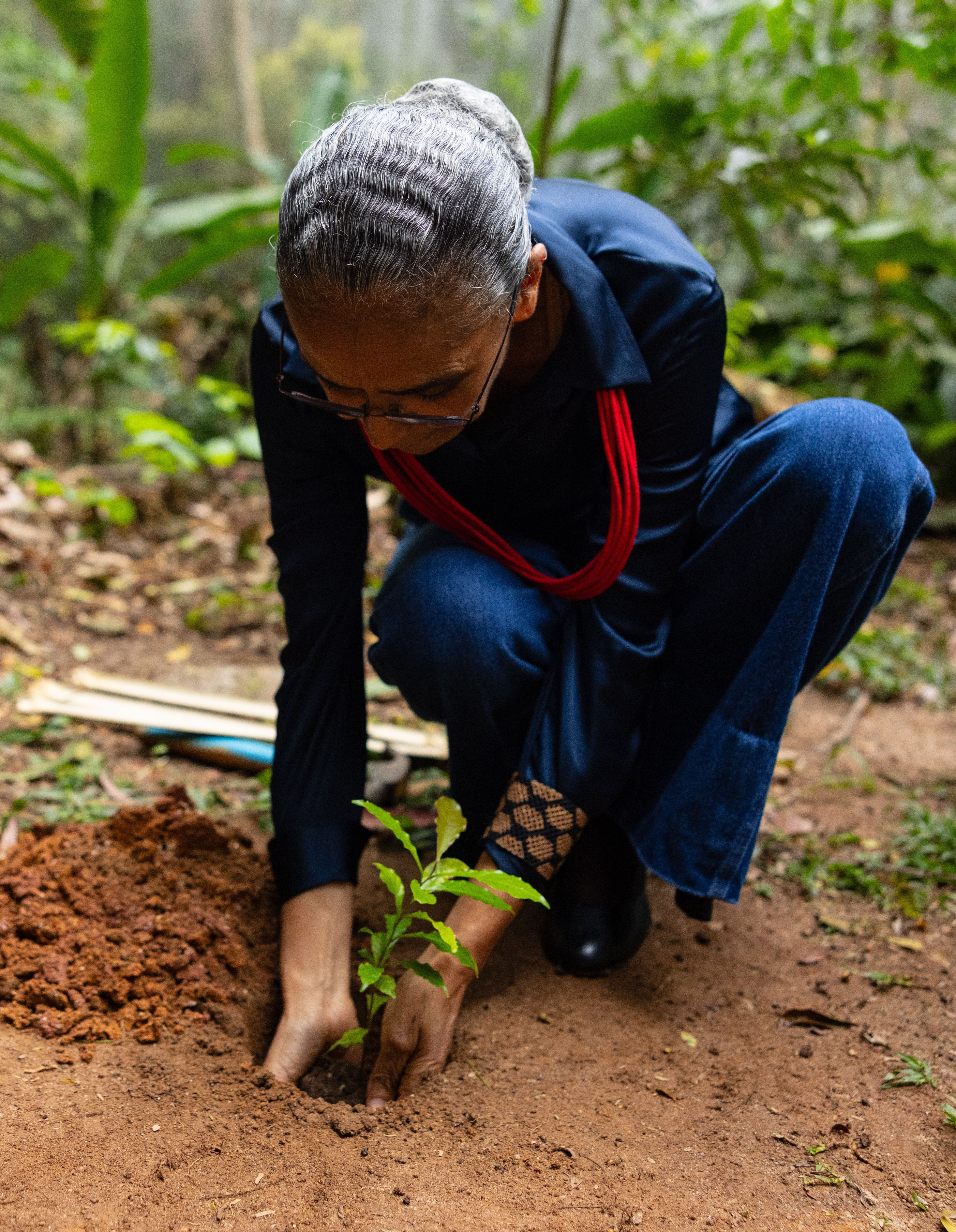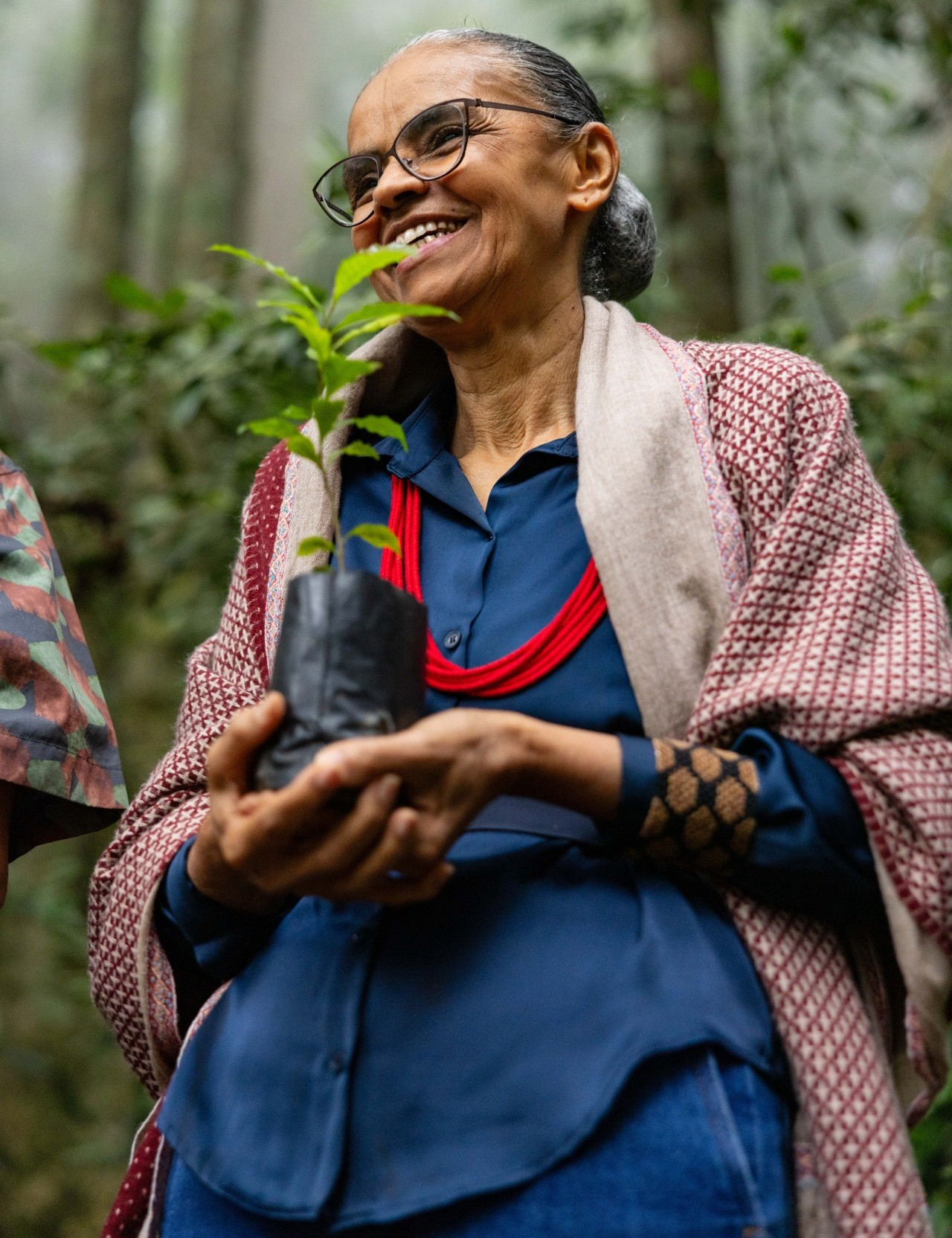The Mutirão event at Tijuca National Park strengthens the COP30 Presidency's reforestation efforts
As part of the official COP30 Presidency calendar, the event promotes Brazil's environmental policy of regeneration. This policy fosters collaboration between government authorities and civil society in the reforestation of the country's first protected area. The area has a conservation history dating back to the 19th century during the Brazilian Empire ruling.

By Inez Mustafa / COP30
A symbolic and practical event marked the reforestation activities of the “Dá Pé – A COP30 é aqui” Mutirão, held at Tijuca National Park, in Rio de Janeiro. The initiative, which is officially part of the preparatory agenda for the 30th United Nations Climate Change Conference (COP30), brought together government and civil society representatives in a large-scale planting of native Atlantic Forest (Mata Atlântica) seedlings.
Ms. Marina Silva, the Minister of Environment and Climate Change (MMA), participated in the mutirão, an initiative conceived by filmmaker Mr. Estêvão Ciavatta. During her speech, Ms. Silva reinforced the federal government’s commitment to achieving zero deforestation by 2030 across all biomes. According to the Minister, achieving this goal requires more than just stopping deforestation. It also entails promoting the intelligent use of natural resources through the bioeconomy, preserving areas that must remain untouched, and regenerating those that have been degraded, as symbolized by the event in the park.
Ciavatta, the creator of the initiative and founder of Pindorama Filmes, highlighted the importance of the mutirão, stating that “it is an opportunity for everyone to actively participate in COP30 in Belém.” He added that facing climate challenges requires unity and collaboration among people — a principle that reinforces the idea that collective work is essential to building lasting solutions.


In her remarks, Marina Silva, the Minister of MMA, emphasized the urgent need to take action against climate change, in line with SDG 13. Image: Juan Ribeiro / SOS Mata Atlântica
The spirit of mutirão was put into practice when approximately 600 seedlings of native Atlantic Forest species were planted. These species included the ipê-amarelo (yellow trumpet tree) and the pau-brasil (Brazilwood). Several authorities attended the event, including Tatiana Roque, Rio de Janeiro’s Municipal Secretary of Science and Technology, and Viviane Lasmar, Director of the Tijuca National Park. The Rio de Janeiro City Hall and the Jardim Botânico of Rio de Janeiro donated the seedlings.
Environmental heritage
Tijuca National Park, where the initiative took place, is an environmental heritage site. Its conservation mission began in the 19th century during the Brazilian Empire ruling, making it the first area of its kind to be protected in the country. Today, the park is home to the world's largest urban reforested area and maintains its pioneering legacy through the Volunteer Program managed by the Chico Mendes Institute for Biodiversity Conservation (ICMBio).
Pindorama Filmes, the world's first zero-carbon audiovisual production company, promoted the event in partnership with the SOS Mata Atlântica Foundation and the Tijuca National Park Volunteer Program.
English version: Trad. Bárbara Menezes.
Proofreading by Enrique Villamil.
